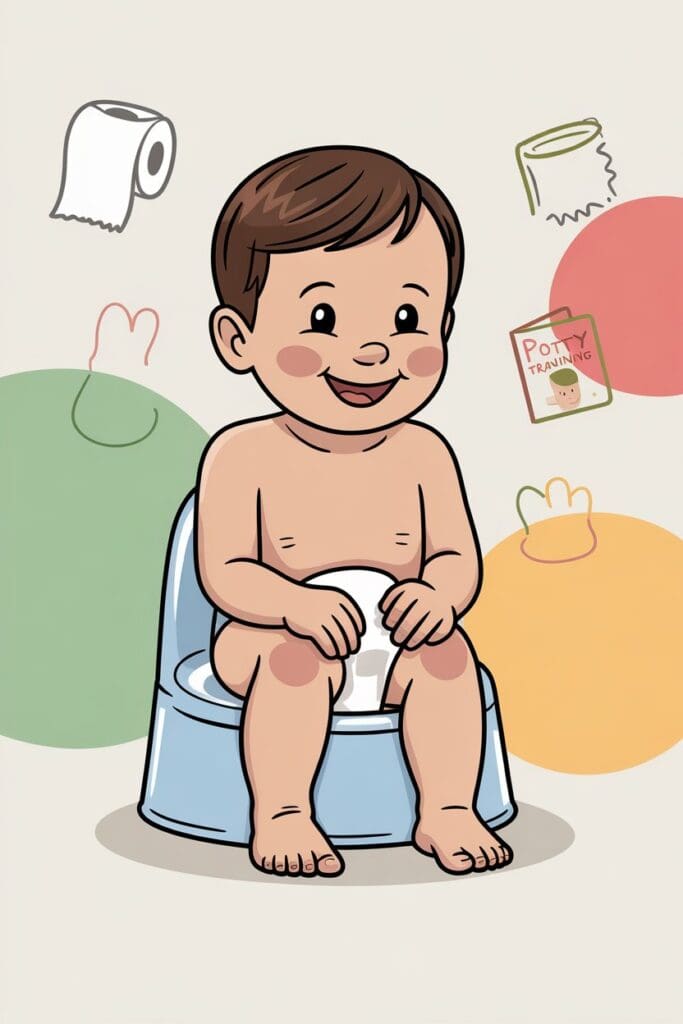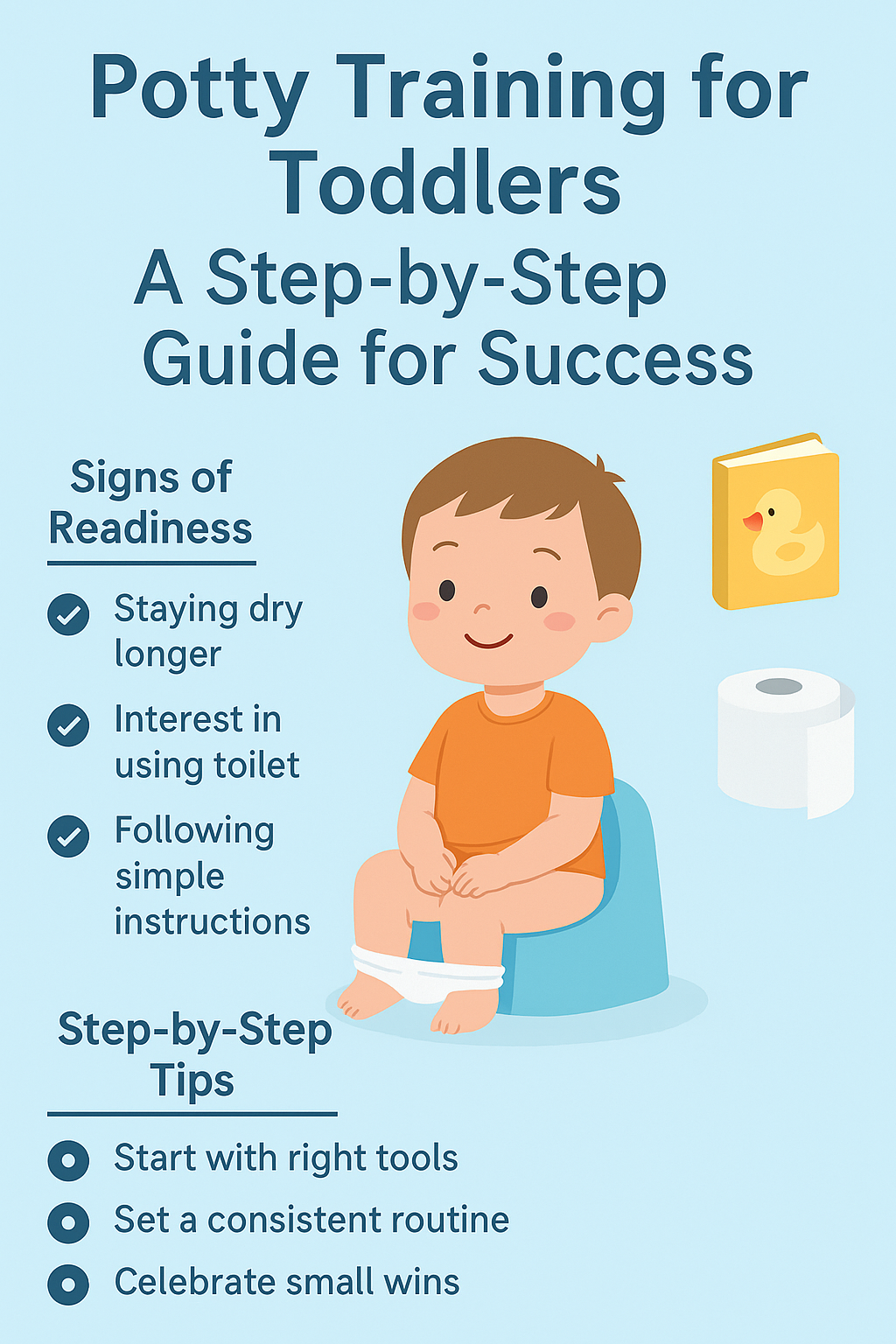Potty Training for Toddlers: 7 Essential Tips for Success
Potty training for toddlers is one of the most significant milestones in their early years.
But it can feel overwhelming for parents who are unsure about when to start or how to make the process as stress-free as possible.
In this comprehensive guide, we’ll walk you through everything you need to know to successfully start potty training for toddlers.
When it comes to potty training for toddlers, starting at the right age and looking for signs of readiness can make all the difference.

Heads up: This post may include affiliate links. As an Amazon Associate, I earn from qualifying purchases—at no extra cost to you. Full privacy policy and disclosure here.
When to Start Potty Training
Knowing when your toddler is ready to start potty training for toddlers is crucial.
- Staying dry for longer periods – If your toddler is staying dry for several hours, it’s a good sign they have developed bladder control.
- Interest in adult bathroom habits – If they’re curious about using the toilet, it shows they’re ready to learn.
- Understanding simple instructions – A toddler who can follow basic instructions like “pull down your pants” is likely ready for the next step.
For successful potty training for toddlers, it’s essential to have the right tools like a toddler-friendly potty chair and training pants.
Step-by-Step Potty Training Tips
- Start with the Right Tools
Make sure you have the right equipment before starting potty training. A toddler-friendly potty chair or seat is essential. If you’re looking for a top-rated potty chair, check out our post on Top Step Stool for Toddler Potty Training. - Create a Routine
Consistency is key. Set up a regular potty routine, taking your toddler to the bathroom at the same times each day. It’s best to start after meals, before naps, and first thing in the morning. - Celebrate Small Wins
Potty training takes time, so celebrate each milestone with positive reinforcement. Whether it’s a sticker chart or a favorite treat, reward your toddler for using the potty. - Use Potty Training Books
Books can be a great way to introduce potty training to your toddler. Some of the best potty training books for kids include funny and engaging stories that will help your child feel more comfortable with the process. Check out our list of Best Potty Training Books for Kids to find the perfect one for your toddler.
Incorporating positive reinforcement during potty training for toddlers will encourage your little one to keep progressing.
If you’re looking for additional tips on potty training toddlers, the American Academy of Pediatrics offers great insights on their website: AAP Potty Training Tips.
Managing Potty Training on the Go
Potty training can become even more challenging when you’re traveling or running errands. To make things easier, try these potty training travel tips:
- Pack Potty Training Essentials
Always carry a travel potty or portable potty training seat in your bag. This way, you’ll be prepared wherever you are. For tips on potty training while on the go, take a look at our Potty Training Travel Tips for Toddlers. - Know Where the Bathrooms Are
Before you head out, plan your route with bathroom stops in mind. Knowing where public restrooms are located can help ease any stress about finding a bathroom in time. - Stay Calm and Patient
Traveling can sometimes throw off your toddler’s routine, but staying patient and calm will help prevent accidents. For more tips on potty training without the stress, check out our Potty Training on the Go: Stress-Free Tips.
Dealing with Potty Training Challenges
Potty training doesn’t always go smoothly. Your toddler may resist or have accidents along the way. Here are some strategies for staying positive and overcoming these challenges:
- Be Encouraging
Kids thrive on encouragement, so use positive potty training quotes to remind yourself and your toddler to stay motivated. Our collection of 61 Encouraging Potty Training Quotes to Keep You Smiling can help keep the journey fun and positive. - Keep It Fun
Potty training doesn’t have to be stressful. Incorporate fun activities like potty training songs or games. These can make the experience feel more like a game than a chore. - Don’t Rush
Every child progresses at their own pace, so don’t compare your toddler to others. If your child has a setback or seems uninterested, take a break and try again later.
Consistency is key when it comes to potty training for toddlers—make sure to set up a routine that works for both you and your child.
Potty Training Tips for Busy Parents
If you’re juggling potty training with your busy schedule, you’re not alone. Here are some toddler mom hacks to save your sanity:
- Keep a Potty Schedule
Setting a timer for potty breaks can help you stay on top of potty training even when you’re busy. It also helps your toddler develop the habit of using the bathroom regularly. - Use Training Pants When Necessary
While it’s important to encourage your toddler to use the potty, training pants can be a helpful tool during the transition phase. For more sanity-saving tips, check out our post on 11 Toddler Mom Hacks That’ll Save Your Sanity and Your Mornings.
Many parents find that using potty training for toddlers books can help teach important lessons in a fun and engaging way.
Bottom Line
Potty training can be challenging, but with patience, consistency, and the right tools, your toddler will be fully potty trained before you know it.
Remember, there’s no one-size-fits-all approach to potty training, so find what works best for your family. And don’t forget to celebrate the little victories along the way!
For expert advice on when to start potty training, check out this Potty Training Guide from Parents Magazine.

